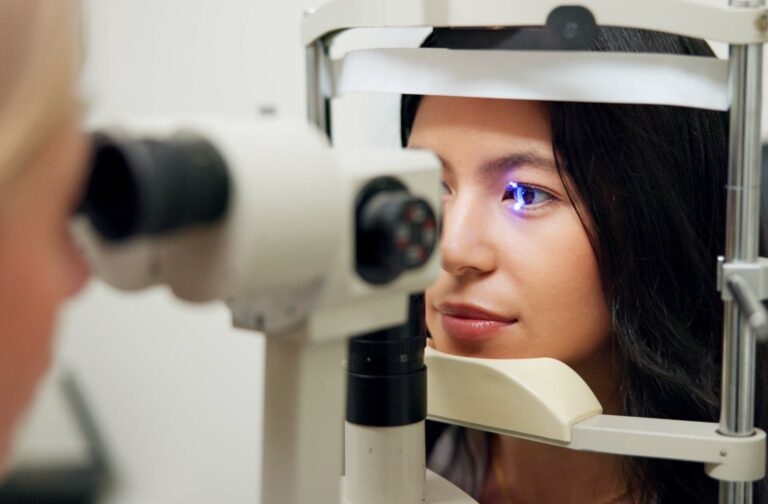Table of Contents

Introduction
Many people underestimate the effect that a comprehensive eye exam can have on their overall health. After all, an eye exam isn’t just about updating your frames and glasses prescription.
Eye exams can help detect many diseases early, from vision conditions like glaucoma, AMD, and cataracts to general health issues like diabetes, heart disease, and high blood pressure. By making eye check-ups a priority, you can protect your family’s vision and uncover potential health issues early.
Common Diseases Detected in an Eye Exam
Many eye diseases can sneak up on you without any early warning. You might only notice something’s wrong once it’s too late to reverse the damage. However, with regular eye exams, you can have a professional take a closer look at your health and potentially spot issues you might miss.
During an eye exam, your optometrist can detect a variety of eye diseases, including:
Glaucoma
Age-Related Macular Degeneration
Age-related macular degeneration (AMD) affects the central portion of the retina, called the macula. This leads to central vision loss. AMD has 2 main types: dry and wet. Dry AMD involves thinning of the macula, while wet AMD involves abnormal blood vessels growing under the retina, which can leak and cause rapid vision loss.
While dry AMD usually progresses slowly, wet AMD progresses rapidly and requires prompt treatment. Your optometrist can look for early signs of either variety of AMD with a dilated eye exam or use advanced imaging like optical coherence tomography (OCT) to get detailed images of the retina. This way, they can assess retina thickness and detect anomalies.

Cataracts
Cataracts form when the lens of the eye becomes cloudy over time. Cataracts are a natural result of the breakdown of the proteins in the lens, but are still a frustrating condition for many older adults. Symptoms develop slowly and include blurred vision, difficulty seeing at night, light sensitivity, and seeing halos.
Your optometrist can often help you adjust to these changes with new glasses or contacts, but they may recommend lens-replacement surgery if vision loss is especially severe.
Dry Eye
Many factors can cause dry eye, from aging to medications, but the result is usually 1 of 2 factors:
- Your eyes don’t make enough tears, or
- Your tears are low quality and evaporate too fast
Dry eye can cause symptoms such as stinging, burning, redness, and blurred vision. Since proper treatment depends on knowing the source of the irritation, an eye exam is an important first step to relief.
To check for dry eye, an eye doctor will start by asking about your symptoms and medical history. They might do a Schirmer test by putting a tiny strip of paper under your lower eyelid to see how many tears you produce.
Another test, called the tear break-up time test, checks how stable your tears are. A dye test might be used to spot any damage to your eye’s surface and see how well tears spread over your eye.
Diabetic Retinopathy
Surprising Health Issues Eye Exams Can Detect
Our body is one, big interconnected system and our eyes often act as a window into its workings. An eye exam can detect:
- Heart disease
- High blood pressure
- High cholesterol
- Rheumatoid arthritis
- Thyroid disease
How Often Should I Get an Eye Exam?
An eye exam typically takes 30–60 minutes, depending on what tests you need. The recommended schedule for eye exams depends on your age:
- Children should have their first eye exam between 6–19 months of age
- One exam between ages 3–5
- Yearly exams between ages 6–17
- Exam at least every two years between ages 18–64
- Annual exams for ages 65+
However, you should always consult with your optometrist to determine the most suitable schedule based on your particular needs and health conditions. Some people with high-risk factors may need more frequent check-ups. These factors can include:
- A family history of eye disease
- Diabetes
- High blood pressure
- Taking medication with visual side effects
- Wearing contact lenses
- Previous eye surgery
- Myopia
Book Your Eye Exam Today
Regular eye exams are a critical component of maintaining both eye health and overall well-being. These exams go beyond assessing your vision; they play a vital role in detecting serious conditions early and offering comprehensive insight into your overall health.
Make eye health a priority in your family’s life by scheduling your eye exam with Golden Vision Optometry today!

